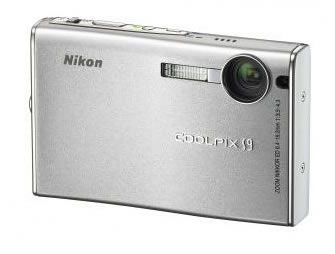Nikon’s 6-megapixel CoolPix S9 digital camera is a very cute-looking and lightweight (it is just 115g in weight) camera that has an excellent and large 2.5-inch screen (there’s no optical viewfinder, a problem during the bright conditions I shot this test, where glare made it hard to see the screen) on the back, with a small porthole-style lens cover for the 38-114mm optical zoom lens.
Our quick take
Perhaps not one for the more advanced user, problems with image detail and JPEG artefacts frustrate an otherwise nice camera. Nikon’s Coolpix S9 is undoubtedly a stylish and easy to use (once you’ve mastered a couple of the small control issues) little camera that makes for a neat little snapper at a good price.

Nikon Coolpix S9 digital camera - 4.0 / 5
| FOR | AGAINST |
|---|---|
|
|
Those tight on space needn't worry as the zoom lens doesn't protrusion from the front of the camera when the camera is switched on and is tucked behind a neat ridge to protect it from intruding fingers and the like, so the net effect is a design that preserves the nice swooping lines of the camera’s small body.
An all-metal construction breeds confidence in this small camera and, as you get to grips with it, two things become obvious.
First, the camera is very simple to use in terms of menus, set up and snapping while the second is that many of the controls are very small and fiddly to use. I’ll deal with the controls first.
Across the top plate are the shutter release, on/off button and Face Detection AF that provides a fast (one touch) method of optimising the camera for portrait shooting. The camera will find and focus on any face in the scene, even setting the camera’s flash to redeye reduction mode. Although quite slow to focus, I found this mode worked on faces even in profile, so is actually reliable.
Interestingly, in playback mode, the same button activates D-Lighting, where in camera processing helps control high contrast images, balancing lighter or darker areas in a shot without sacrificing the detail.
Last up on the top plate is the tiny flipper-type lens zooming control. It is mounted here to provide and ensure precious thumb space on the camera’s back for one handed snapping. However, in doing that, the compromise is the lens control is tiny and quite hard to use until you get used to it. The best technique is to gently rock the control, under your right index finger, without lifting said finger from the shutter button. Once mastered you get a good level of control over the small zoom.
A small flash unit sits next to the lens on the front, which is otherwise devoid of controls. The flash is actually good as a fill-in, no more, but at closer distances, particularly when shooting close up subjects, it can be very overpowering and, because there is not flash compensation available to tweak the output in such situations, you can’t allow for it before hand.
In fact, the S9 lacks almost all manual shooting controls apart from +/- 2EV or exposure compensation (sadly locked in a menu), but in reality, the S9 is simply not that type of camera.
Instead, you get the main – program AE – shooting mode and a selection of subject program or scene modes. The four main scene modes; portrait, landscape, sports and night portrait, each have an assist mode that provides a series of framing guides depending on what type of shot it is you want make in each of the four modes.
For example, landscape provides four settings with various framing options for scenic, architectural, group right and left landscapes. The remaining 11 scene modes include a panoramic assist mode, dusk/dawn, beach/snow and a fireworks setting to name a few.
In terms of sensitivity, the S9 has a modest range from ISO 64 to ISO 400. And while this range is small, it helps ensure there’s not too much noise overloading any images. The downside is the lack of image stabilisation that means camera shake can intrude at longer focal lengths or in low light.
In terms of image quality, the S9 does rather well. Your shots are saved on SD/MMC storage housed in a flap on the base alongside the camera’s lithium-ion rechargeable battery pack. Despite that 6-megapixel sensor, there is a slight problem of noise in shadows even at the lowest ISO 64 setting and, even though the limited maximum sensitivity of ISO 400 should help, noise is still noticeable in all other ISO settings.
A couple of novelty items I liked should be mentioned. The 640x480-pixel movie mode is enhanced with both a time-lapse and a stop motion setting, enabling you to animate desk accessories and bring them to life (should the need arise) or to slowly capture the unfurling of a flower if you have the time.
To recap
The gently swooping curve of the camera’s faceplate and the neat, internal, vertical travel zoom lens complete an extremely attractive package.
